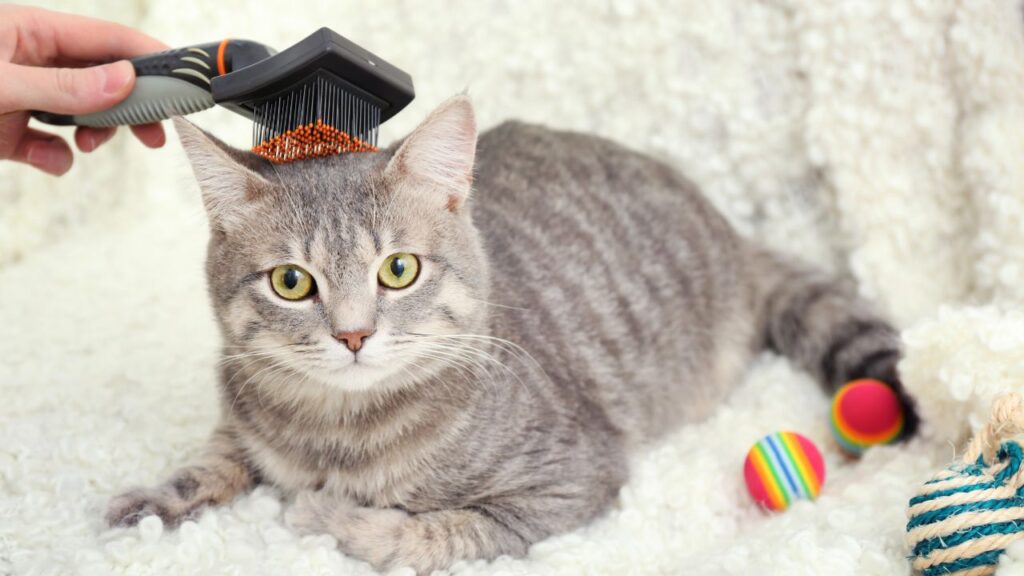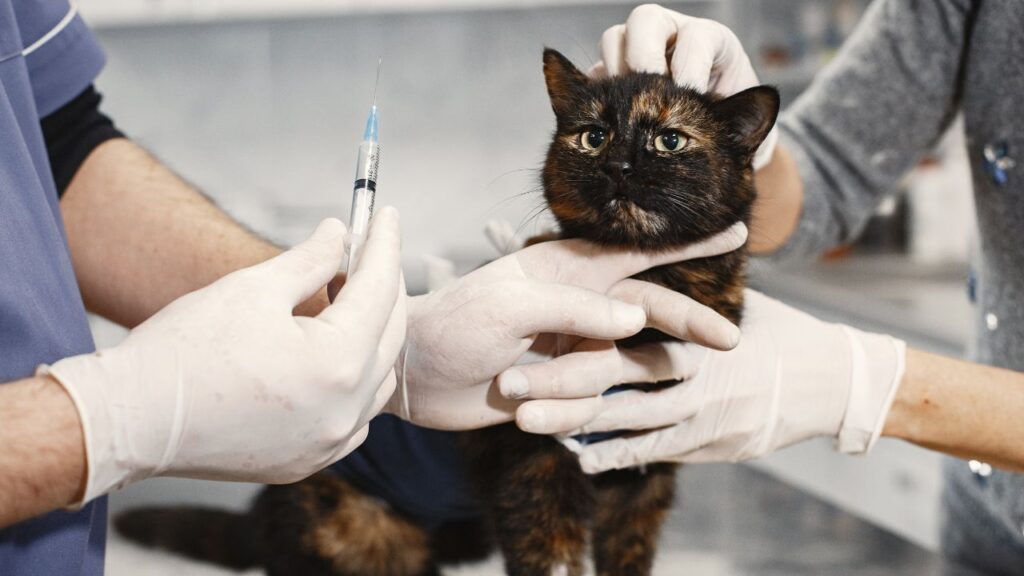Bringing a new cat into your home is an exciting adventure filled with joy, purrs, and playful antics. However, ensuring your feline friend thrives requires understanding essential best cat care tips for beginners. Whether you’re welcoming a playful kitten or a serene adult cat, this comprehensive guide offers detailed, practical advice on feeding, grooming, health care, and creating a cat-friendly environment. Let’s embark on this journey to provide the best care for your new companion.
Contents
Feeding Your New Cat
Proper nutrition is the foundation of your cat’s health and well-being. Understanding how to take care of a kitten or an adult cat’s dietary needs is crucial for their growth, energy levels, and overall health.
Selecting the Best Cat Food for Kittens
Choosing the right food is essential, especially for kittens who are growing rapidly.
- High-Quality Protein: Look for foods where animal protein (e.g., chicken, fish) is the first ingredient.
- Age-Appropriate Formulas: Kittens require food specifically formulated for their developmental stage, providing higher protein and fat content.
- Wet vs. Dry Food: Wet food helps with hydration, while dry food is convenient and can aid dental health. A combination of both can offer balanced benefits.
- Avoid Fillers: Steer clear of foods with excessive fillers like corn or soy, which offer little nutritional value.
- Consult Your Vet: If your kitten has specific health needs, your veterinarian can recommend specialized diets.
Establishing a Feeding Schedule
Consistency in feeding helps regulate your cat’s digestion and prevents overeating.
- Kittens: Feed small, frequent meals (3-4 times a day) to meet their high energy needs.
- Adult Cats: Typically thrive on two meals per day.
- Portion Control: Follow the guidelines on the cat food packaging, adjusting based on your cat’s weight and activity level.
- Monitor Weight: Regularly check your cat’s weight to ensure they are neither underfed nor overweight.
Ensuring Fresh Water Availability
Hydration is vital for your cat’s health, especially if they consume dry food.
- Multiple Water Bowls: Place water bowls in different areas around your home.
- Change Water Daily: Fresh water encourages your cat to drink more.
- Water Fountains: Some cats prefer running water, and fountains can stimulate their interest in drinking.
Grooming Essentials for Cats
Regular grooming not only keeps your cat looking sleek but also prevents health issues and strengthens your bond.

Regular Brushing and Coat Care
Brushing helps reduce shedding, prevent matting, and minimize hairballs.
- Short-Haired Cats: Brush once a week to remove loose fur.
- Long-Haired Cats: Daily brushing is recommended to prevent tangles and mats.
- Suitable Brushes: Use brushes designed for your cat’s coat type, such as slicker brushes for long-haired breeds or bristle brushes for short-haired cats.
- Start Early: Introduce grooming routines when your cat is young to build positive associations.
Nail Trimming Techniques
Keeping your cat’s nails trimmed prevents overgrowth and reduces the risk of injury.
- Frequency: Trim nails every 1-2 weeks.
- Proper Tools: Use cat-specific nail clippers or scissors.
- Safe Handling: Gently press the paw to extend the claws, and avoid cutting the quick (the pink area containing blood vessels).
- Positive Reinforcement: Reward your cat with treats and praise to make the experience positive.
Maintaining Dental Hygiene
Good dental care prevents periodontal disease and other health issues.
- Brushing Teeth: Aim to brush your cat’s teeth several times a week using cat-friendly toothpaste.
- Dental Treats and Toys: Provide treats and toys designed to reduce plaque and tartar buildup.
- Regular Vet Checkups: Have your veterinarian examine your cat’s teeth during routine visits.
Cat Health Tips
Maintaining your cat’s health involves regular checkups, vaccinations, and preventive care.
Routine Vet Visits and Vaccinations
Regular veterinary care is essential for early detection and prevention of diseases.
- Vaccination Schedule: Follow your vet’s recommended schedule to protect against diseases like rabies, feline distemper, and calicivirus.
- Annual Checkups: Schedule yearly or bi-annual visits for health screenings and preventive care.
- Spaying/Neutering: Consider spaying or neutering to prevent unwanted litters and reduce the risk of certain health issues.

Flea and Parasite Control
Protect your cat from fleas, ticks, and internal parasites to ensure their comfort and health.
- Preventative Treatments: Use vet-recommended flea and tick preventatives regularly.
- Regular Checks: Inspect your cat for signs of fleas or ticks, especially after outdoor exposure.
- Environmental Control: Keep your home clean by vacuuming frequently and washing your cat’s bedding to reduce parasite habitats.
Recognizing Signs of Illness
Early detection of health issues can save your cat’s life.
- Behavioral Changes: Monitor for changes in appetite, activity level, or litter box habits.
- Physical Symptoms: Look for signs like vomiting, diarrhea, coughing, sneezing, or excessive grooming.
- Regular Monitoring: Keep an eye on your cat’s weight, coat condition, and overall appearance to catch any issues early.
Creating a Cat-Friendly Environment
A stimulating and safe environment is key to your cat’s happiness and well-being.
Setting Up the Perfect Litter Box
Proper litter box setup is crucial for your cat’s hygiene and comfort.
- Number of Boxes: Provide one litter box per cat, plus an extra one.
- Location: Place litter boxes in quiet, accessible areas away from food and water.
- Type of Litter: Choose a litter your cat prefers, whether clumping, non-clumping, scented, or unscented.
- Regular Cleaning: Scoop daily and change the litter as recommended to maintain cleanliness.
Providing Scratching Posts and Toys
Cats need to scratch and play to stay healthy and happy.
- Scratching Posts: Provide sturdy scratching posts or pads in various locations around your home.
- Variety of Toys: Offer a range of toys, such as wand toys, balls, and interactive puzzles to keep your cat engaged.
- Toy Rotation: Rotate toys regularly to keep your cat interested and prevent boredom.
Designating Safe Spaces and Enrichment Areas
Creating areas where your cat can retreat and explore promotes mental and physical health.
- Perches and Cat Trees: Provide elevated spaces for your cat to observe their environment and satisfy their natural climbing instincts.
- Hideaways: Offer cozy hideouts like cat beds or boxes where your cat can relax and feel secure.
- Interactive Play: Engage in regular play sessions to provide mental stimulation and strengthen your bond with your cat.
Conclusion: Best Cat Care Tips for Beginners
Embarking on the journey of cat ownership is both rewarding and fulfilling. By following these best cat care tips for beginners, you’ll ensure your new feline friend enjoys a healthy, happy, and enriched life. From selecting the best cat food for kittens and mastering grooming essentials to maintaining their health and creating a cat-friendly environment, every aspect of care plays a vital role in your cat’s well-being. Remember, every cat is unique, so take the time to understand your cat’s individual needs and preferences. With love, patience, and dedication, you’ll build a strong, lasting bond that brings joy to both your lives.
Welcome to the wonderful world of cat ownership—may it be filled with purrs, playful moments, and endless companionship!

